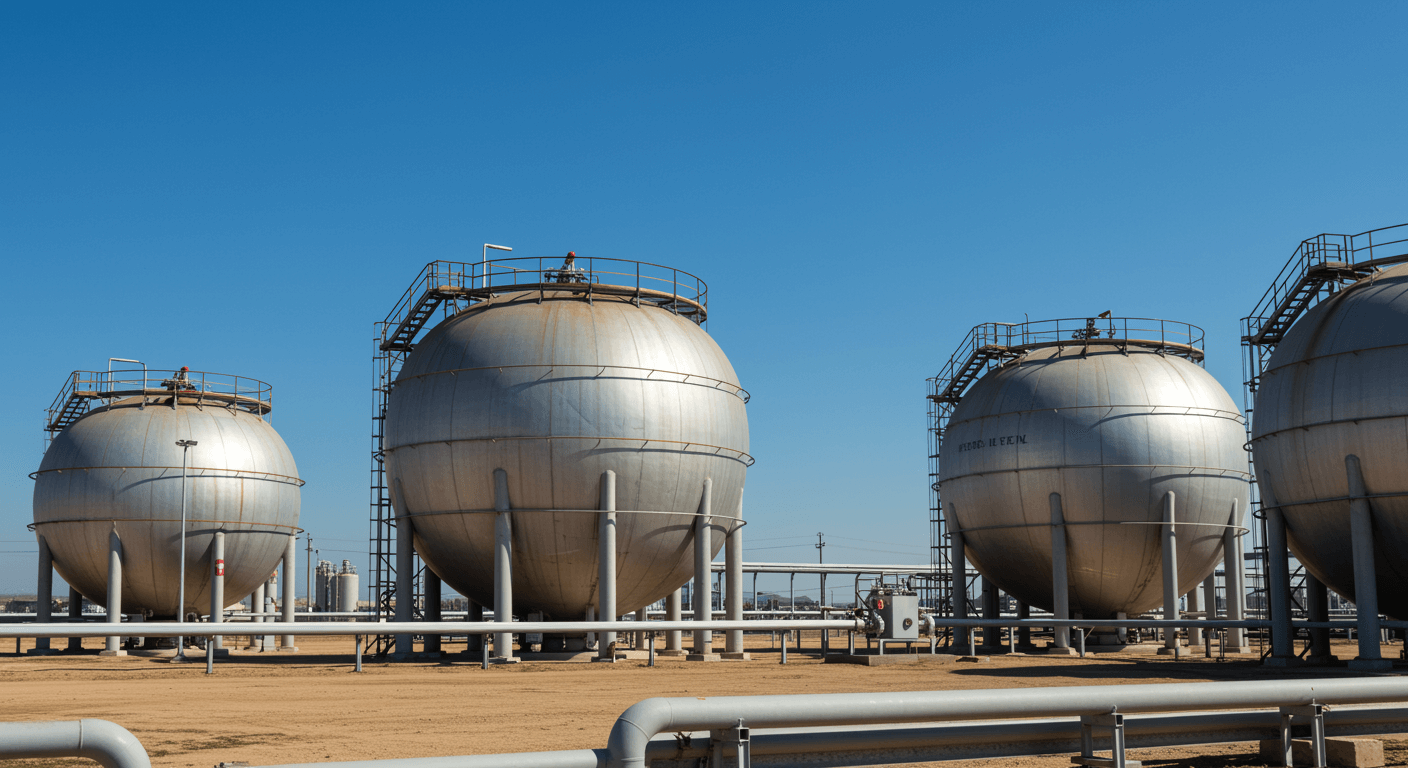Liquefied Petroleum Gas (LPG) is a versatile and widely used energy source that has become a crucial component of the global energy market. Composed mainly of propane and butane, LPG is used for a range of applications, from household cooking and heating to industrial processes and as a fuel for vehicles. The trading of LPG is an important part of the energy sector, affected by various factors such as production, transportation, supply and demand dynamics, and global economic trends. This article explores the key elements of LPG trading, including its market drivers, trading process, and challenges.
What is Liquefied Petroleum Gas (LPG)?
LPG is a mixture of propane and butane gases, which are liquefied under moderate pressure or at low temperatures for ease of storage and transport. LPG is primarily derived from natural gas processing and crude oil refining. It is stored and transported in pressurized tanks or refrigerated containers, making it easily accessible for both residential and commercial use.
LPG has a wide range of uses:
-
Domestic use: LPG is commonly used in cooking, heating, and water heating in households.
-
Industrial applications: It is used in various industries for heating, powering equipment, and as a raw material for petrochemical production.
-
Automotive fuel: LPG is also used as an alternative fuel in vehicles, commonly known as autogas.
-
Export and import: LPG is traded globally, with significant export and import activities between countries.
Factors Affecting LPG Trading
Several factors influence the pricing, supply, and demand of LPG in the global market, making LPG trading highly dynamic and volatile.
-
Crude Oil and Natural Gas Prices: LPG is derived from both natural gas and crude oil, and therefore, its price is closely linked to the fluctuations in crude oil and natural gas prices. When crude oil prices rise, the cost of producing LPG also increases, leading to higher prices in the market.
-
Seasonal Demand: The demand for LPG varies significantly with the seasons. During colder months, the demand for LPG tends to increase, especially for heating purposes in residential and commercial sectors. In contrast, demand usually drops during warmer months, particularly in regions where LPG is predominantly used for heating.
-
Geopolitical Events: Just like other energy commodities, LPG prices and supply can be influenced by geopolitical tensions, natural disasters, or disruptions in supply chains. Political instability in key oil-producing regions can impact both the supply of LPG and its trading prices. For example, hurricanes in the Gulf of Mexico can disrupt LPG production and export from the United States, leading to price spikes in global markets.
-
Supply and Demand Balance: The global balance of supply and demand is one of the most important drivers of LPG prices. Major exporters like the United States, the Middle East, and Russia play a significant role in determining global LPG prices. When supply exceeds demand, prices may fall, while a shortage of supply can cause prices to rise.
-
Regulations and Environmental Policies: LPG is seen as a cleaner alternative to other fossil fuels such as coal and diesel. Environmental policies and regulations that encourage the use of cleaner fuels can increase demand for LPG. Additionally, government subsidies or taxation on fuels can impact the price competitiveness of LPG in certain regions.
The LPG Trading Process
LPG trading occurs in both physical and financial markets. It involves various stakeholders, including producers, refiners, traders, transporters, and consumers. The trading process of LPG can be broadly broken down into the following stages:
-
Production: LPG is produced during the refining of crude oil or as a byproduct of natural gas processing. Major oil and gas companies are the primary producers of LPG, and they typically have long-term contracts with traders and distributors.
-
Transportation and Storage: Due to its liquefied form, LPG must be transported in specialized containers such as pressurized tanks or refrigerated vessels. Transportation methods include pipelines, ships, and trucks. Storage facilities are also necessary to maintain the supply and meet fluctuating demand.
-
Spot and Contract Markets: LPG can be traded in both the spot market (where buyers and sellers agree on immediate delivery) and through long-term contracts. The spot market for LPG operates similarly to other commodities, with buyers and sellers agreeing on price and delivery terms for immediate or near-term delivery. In contrast, long-term contracts are often used by major buyers, such as industrial users or distributors, to ensure a consistent supply at predetermined prices.
-
Pricing and Hedging: LPG prices are generally determined by the market forces of supply and demand, though major trading hubs like Mont Belvieu (United States) and the Middle East influence pricing. Traders often use financial instruments like futures and options contracts to hedge against price volatility in the LPG market. These financial products allow businesses to lock in prices for future deliveries, minimizing the risks associated with price fluctuations.
Challenges in LPG Trading
Despite the growing demand for LPG, there are several challenges associated with trading the commodity.
-
Price Volatility: The price of LPG is subject to fluctuations based on external factors such as crude oil price changes, geopolitical instability, and weather patterns. These fluctuations can make it difficult for traders to predict future prices, leading to potential losses.
-
Transportation and Logistics: Due to its nature, transporting and storing LPG can be costly and logistically challenging. Ensuring a consistent supply of LPG to meet demand requires a well-coordinated infrastructure of pipelines, shipping, and storage facilities, which can be vulnerable to disruptions.
-
Environmental Concerns: While LPG is considered a cleaner alternative to other fossil fuels, it is still a hydrocarbon-based energy source that contributes to greenhouse gas emissions. As the global energy market shifts toward renewable energy, LPG may face competition from alternative fuels, which could impact its long-term demand and pricing.
-
Regulatory Compliance: The LPG industry is subject to various regulations regarding its production, storage, transportation, and use. Compliance with these regulations can incur additional costs, and any changes in government policy, particularly regarding carbon emissions or fuel subsidies, can have a significant impact on the market.
Opportunities in LPG Trading
Despite these challenges, the LPG market presents significant opportunities for traders, investors, and companies involved in its production and distribution.
-
Growing Demand in Developing Markets: As economies in developing regions like Africa, Asia, and Latin America continue to grow, the demand for LPG is expected to rise. These regions are increasingly adopting LPG for cooking, heating, and industrial purposes, offering new markets for exporters.
-
Transition to Cleaner Fuels: As governments around the world focus on reducing carbon emissions, LPG is becoming an attractive alternative to more polluting fuels like coal and diesel. This transition can lead to increased demand for LPG in sectors such as transportation, where autogas is gaining popularity as a clean fuel for vehicles.
-
Technological Advancements: Innovations in LPG storage and transportation technology could help reduce costs and improve efficiency, opening up new opportunities for traders and investors.
LPG is an important commodity in the global energy landscape, with a diverse range of applications in domestic, industrial, and transportation sectors. The trading of LPG is influenced by various factors, including crude oil prices, seasonal demand, geopolitical risks, and environmental regulations. Despite the challenges associated with price volatility, logistical complexities, and environmental concerns, LPG trading continues to offer opportunities for growth, particularly in emerging markets and sectors focused on cleaner energy solutions. As the global market evolves, understanding the dynamics of LPG trading will remain crucial for stakeholders in the energy industry.










